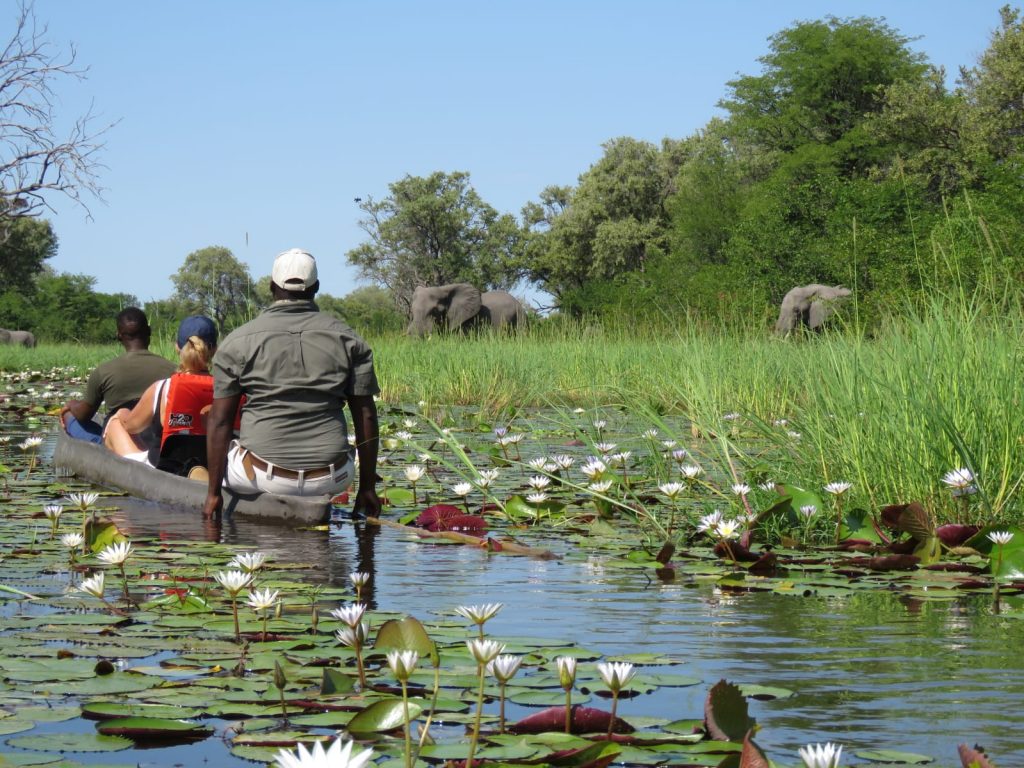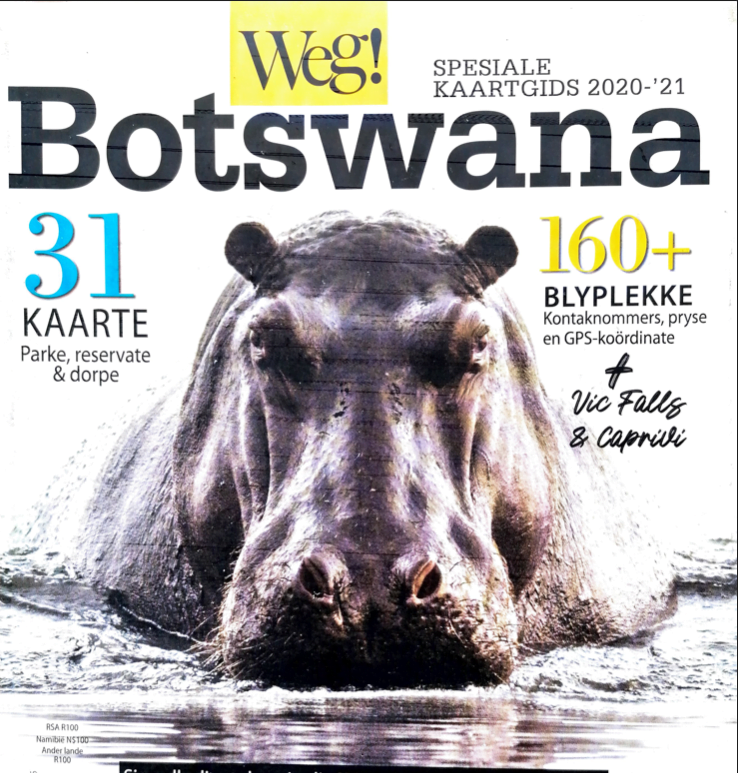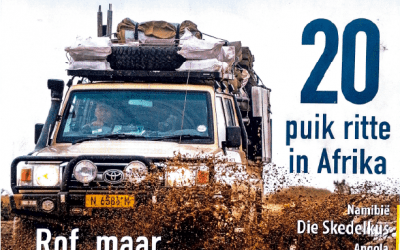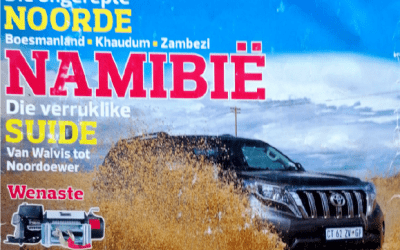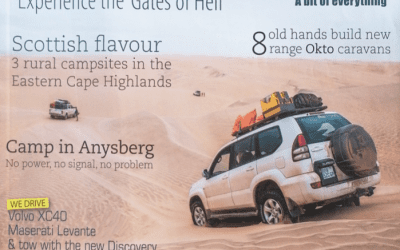With three vehicles equipped with every kit imaginable, we are ready for our journey to the Central Kalahari Game Reserve. With us are Steph’s parents, Jill and Phil who flew in from Australia to spend time with us; it’s their first time in Africa and their excitement is palpable. The Perrins joined us in the Kruger National Park, along with my uncle, Vic Ives Sr., who had driven from Cape Town. Steph and I drive in our beloved 1999 Toyota Land Cruiser 4500 EFI (the thirsty one); by this time of our trip it was our second home. I am still a South African citizen, but Steph is an Australian and we work in Australia and New Zealand to save money for travel. This visit to the Central Kalahari is part of a longer journey. By this time we are already eight months on the road. (See p. 53 for more on their wanderings. – Ed.) ill and Phil rented a Toyota Hilux from Bushlore in Mbombela (with an Alucab camper unit on the back), and Uncle Vic brought his Hilux. I previously worked as a 4×4 guide in Southern Africa and this is not my first visit to the reserve. It was indeed special as I would be able to enjoy the place with my own people. After we passed through the Kruger and survived Musina’s mess
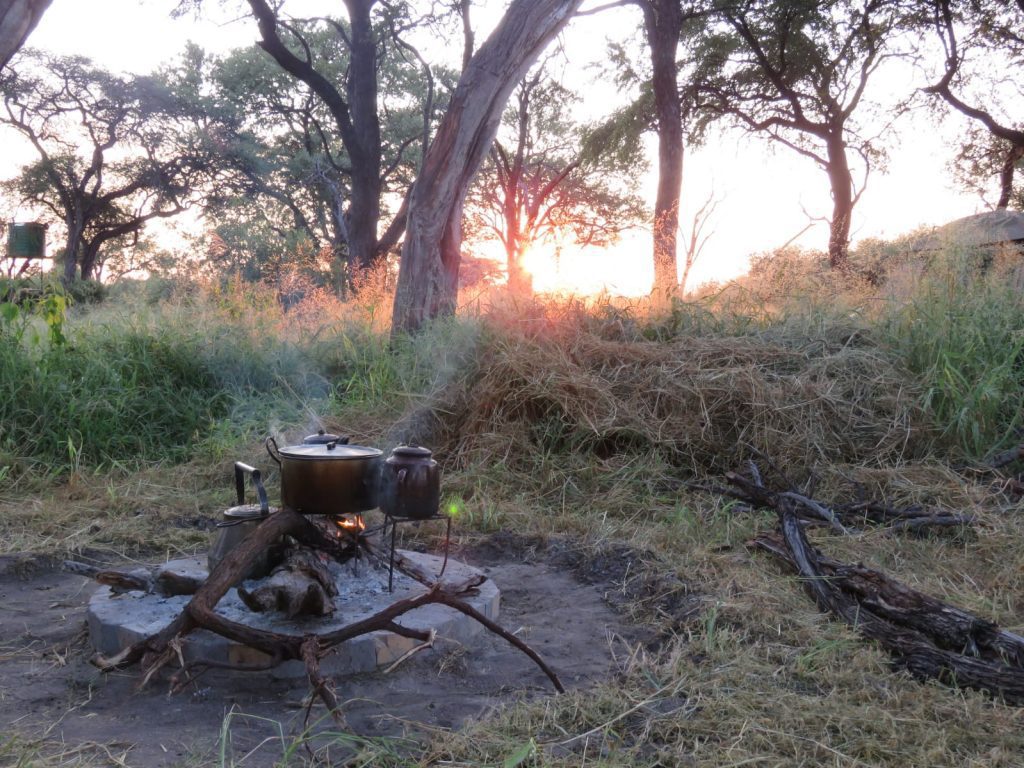
animal race, including a group of rhinos and some exuberant calves. It was a highlight, especially for the Aussies. It was almost P3 000 (R4252) for two nights of camping for five people – including the daily entrance fee and vehicle fare – which is quite expensive. For that kind of money, the management has to renovate the dilapidated facilities (see rates on p.63). We built an extra night into the trip to the Central Kalahari because we were unsure how long it would take to drive from Khama. At least the tarmac road to Rakops was passable, and we stopped at the town for fuel as it is the last filling-up place before the park. After that we headed for the Matswere gate. When we left the tarmac, we pulled the convoy over to lower the vehicles’ tire pressure. This late in the summer the road conditions can be unpredictable. Fortunately, it hadn’t rained in this area for a long time, and the main road to the gate was passable. However, now we were close to the reserve without any reservation for accommodation. So we start looking for a suitable place to stay 30 km from the tarmac. Just as the sun was setting. find us a place. It’s always exciting to set up field camp in a remote location. Perhaps it is the feeling of freedom, isolation and possible danger. We crawl into our roof tents after a delicious meal and hang out around the campfire. Even before sunrise, a bunch of pheasants wake us up. After a strong cup of coffee we set up camp. We try to disturb vegetation as little as possible, put out the fire well and take all our rubbish with us. Then we head to the Matswere gate, which is only 10 km away. Sunday at the Sunday pan Winter is the busiest tourist season in Botswana. Summer is the green season, which is very hot and wet and then most tourists stay away. So we had the camps to ourselves. We would like to

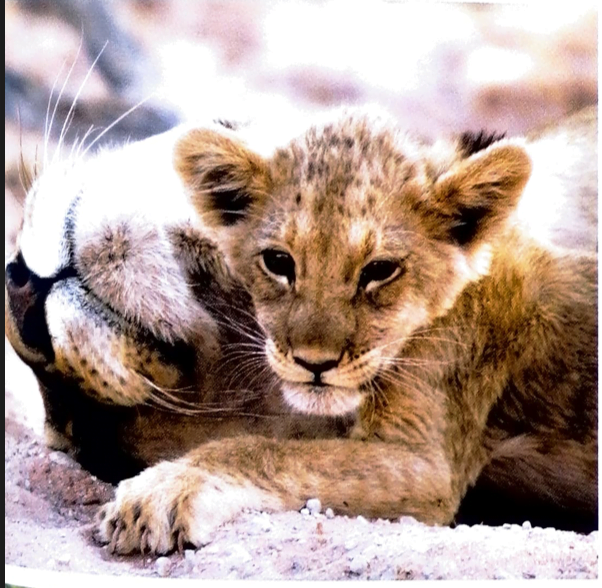
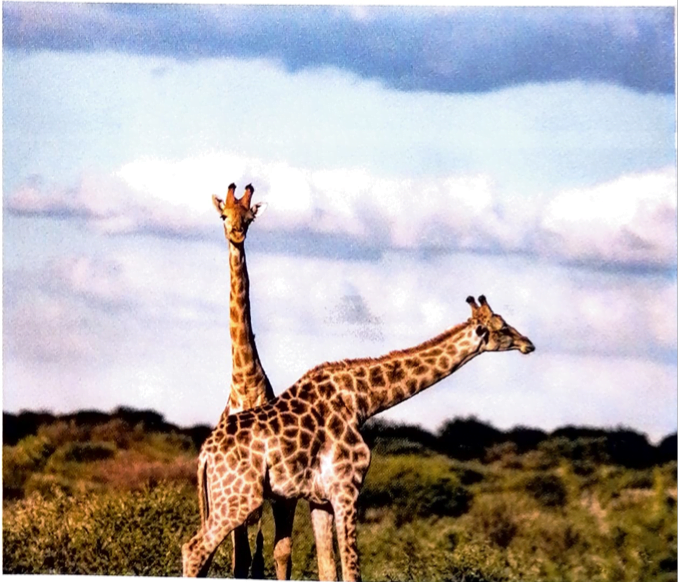
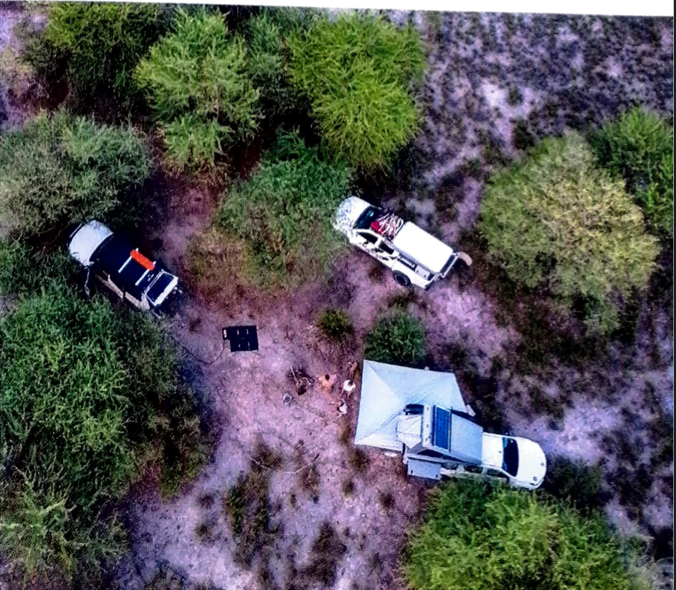
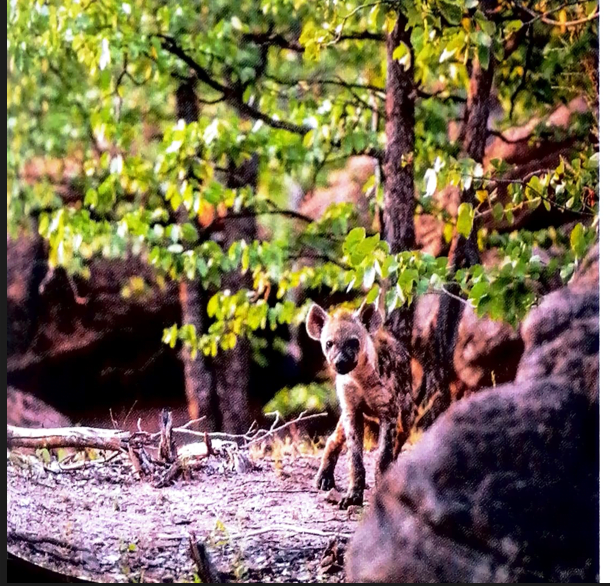
sharing the experience with Steph’s parents. They never saw a lion at night or didn’t hear that impressive roar. Paperwork at a park gate can sometimes be frustrating. The woman who helps ans, could not get ans proof of payment and had to call a colleague in Gaborone who on was in the church at that time. Then ans just took out a gas duster and boil water for tea. After the church service was confirmed as booking. The park officials usually ask where you aim, and give hints about roads, water availability and fuel. Listen to them. A park like this is great and you don’t want to get into trouble. We have four nights in the reserve booked: two at Sunday pan and two at Deception Camp. After that, ans would go north drive to the Chobe National Park. The reserve is home to the legendary black maned lions of the Kalahari and ans are now moving into them surroundings: Sunday-pan, about 60 km further. A few years ago when I as a guide worked, a lioness ans in the kitchen surprise This time I don’t take any chances are not. Deeper into the park the roads are happy also polite. Dry, deep grooves bore witness of the rain in the preceding months, but with the vehicles in 4×4 traction could drive over it with ease. If there is water in these grooves was, would ans through black mud pools (cotton soil) must plod. And it would be a low-strung struggle. Of course it helped that everyone of the vehicles good ground clearance has. In the summer one must be careful be that grass does not get tangled in the vehicle’s radiator or antler warm parts not, such as next to the exhaust pipe, where a fire can easily start. Each vehicle has a grass net over the radiator got to keep grass out. Into the grass however, the middle man was mostly flattened by previous vehicles, so did ans had no problems. We happened to have lunch at noon
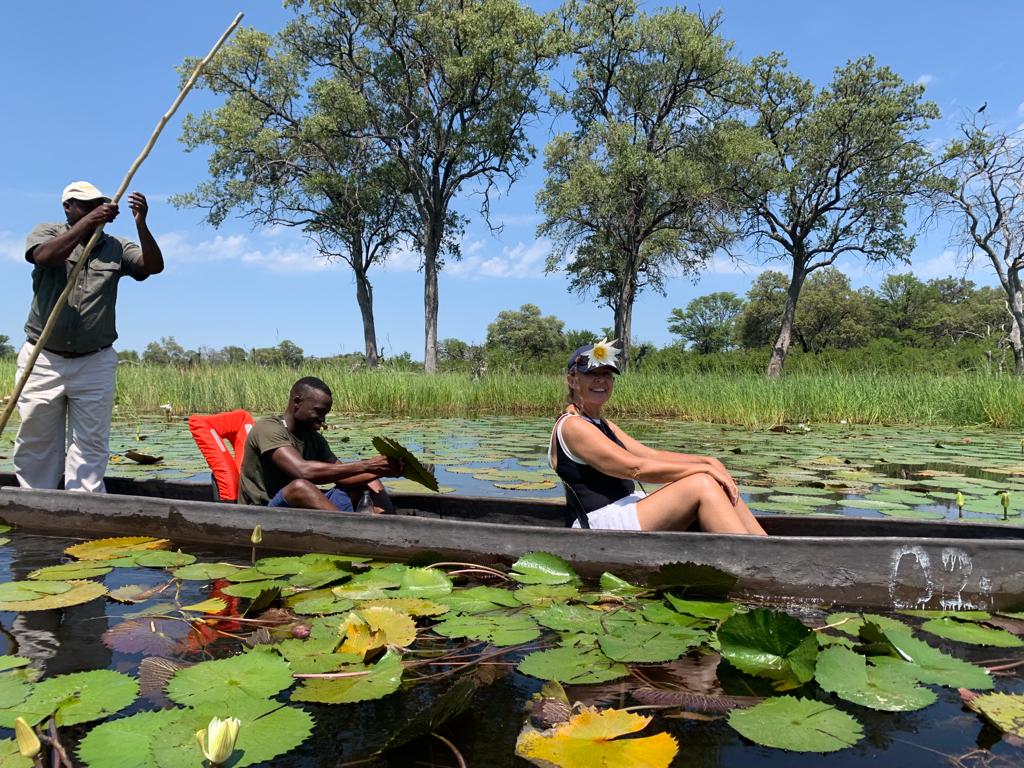
Midnight visitors Steph and I still drive to before sunrise the pan. A few springboks are also out the feathers and show around the pan. Next stop is Deception pan, where we booked two nights. Over the dunes, we drive into the thickets. The Aussies loved to hang out next to the driving sandy roads and not knowing what not waiting in the way. This time we drive against the sun, and that’s it easier to own animal tracks thanks to the shadows of each track. I hold immediately quiet when I fresh lion tracks see. We follow it a few kilometres before it disappears… Then we see the lions bite the road! Steph is overwhelmed that her parents can see the mane. In the group are two large male lions, three females and two cubs. The cubs are shy and soon disappeared into the forest. We were just 6 km from Deception Camp and the chances were high that they would spend the night the camp would really shake… By noon we are at Deception Camp, where we rest in the afternoon pass through and then a short route through Dec ep tion Valley drive. That evening we sleep under a full moon with the roar of lee us in the distance. The next morning I search the campsite and get a lot of lion tracks. The whole herd was there! Jill and Phil can
Our last night passes without incident and the next day we aim slowly to the Mats were gate. We have did not see loads of lions, a great reason why people flock here. Yet the reserve offers so much more. To be alone in a vast landscape is exciting. You feed! one with nature. Uncle Vic, who is almost everywhere else travelled Southern Africa, it is agreed: The Sen trial Kalahari Game Reserve speaks to your soul Here we learned to the small to appreciate wonders: Koringvoels what nest building, a dragonfly looking for his next victim, a dung beetle who wrestles with a dung ball twice the size, a korhaan calling to a . 0 mate and a lonely hyena’s grunt 1 the night… . 1 These are the things that haunt me late return
